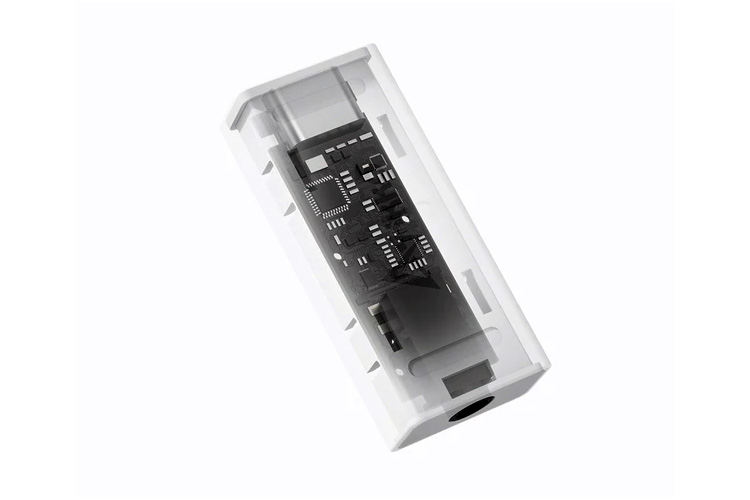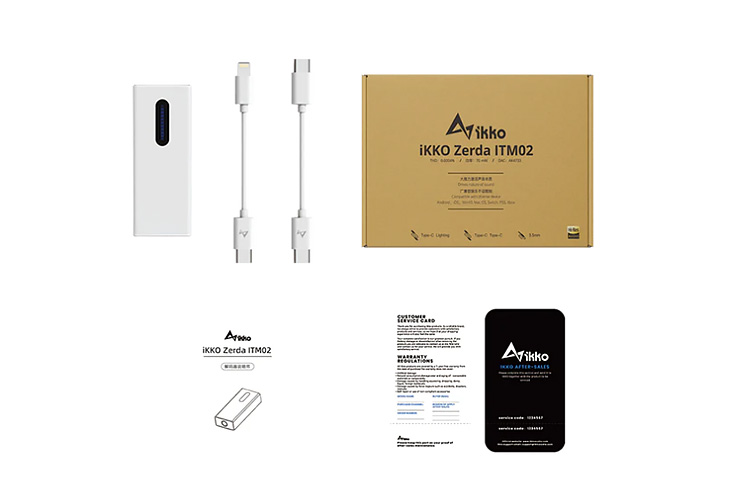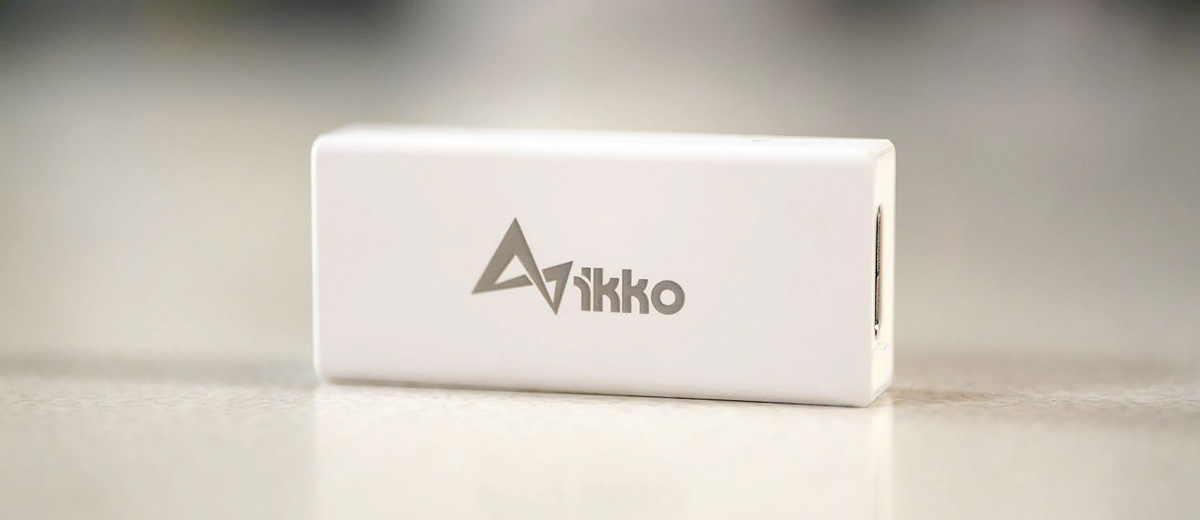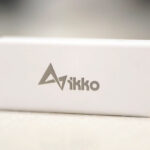This is a review of the iKKO Zerda ITM02 which is a portable dongle DSD128 capable DAC and 70mW @32Ω single-ended headphone amplifier. It has a price of $59 currently discounted to $50.15.
Disclaimer: This is a sample sent in exchange for our honest opinion. Headfonics is an independent website that does not have any affiliate links or status. We thank the team at iKKO Audio for giving us this opportunity.
To read more about iKKO products we have previously covered on Headfonics you can click here.
Note, that this article follows our latest scoring guidelines which you can read up on here.
IKKO kind of came out of nowhere, didn’t they? Like BAM! Here come some reputable budget IEMs such as the Gems OH1S and the original OH1 and some audiophile community love.
That’s the kind of stuff I want to see and hear as a reviewer, a company that cares and strives to put forth quality affordable products for us to enjoy.
In this review, we will be talking about one of the most affordable dongle-DACs on the market today, the Zerda ITM02. A portable DAC and amp combo that is intended for use with cell phones for those that have been in the dark this last year or two.

Tech Highlights
The Zerda ITM02 puts out 70mW @32Ω, which is not at all enough to satiate most audiophile headphones beyond 32Ω these days. But, for general consumers and very efficient earbuds or IEMs, this is totally fine.
Does this bother me? Well, not really. Most, if not all of these smaller DACs put out small numbers, so you are clearly not intended to power a 600Ω Sennheiser HD800, but you know I’m going to anyway!
DAC
The classic AK4377 is just fine. No, really! They are just fine overall and don’t really lack anywhere. They are generalist chips, they are balanced in quantities, and usually have a very slight treble brightness factor to make the sound signature at least somewhat interesting.
In this case, I found that to be quite accurate in my testing phases. The AK4377 is a budget chip, this is now the entry-level audiophilia-tier quality and that is a good thing. A few years ago, ultra-budget sounded much worse than this.
Amp & Battery
The Zerda ITM02 is, of course, a solid-state design. I can say though, at 70mW draw, the Zerda ITM02 can drain your phone a fair bit after just a few hours.
After all, it has no internal battery and it relies on your phone to power it. My phone of choice is the Sony Xperia 1iii, and I get lots of hours of music on it via its 3.5mm output. However, the ITM02 here plugged in, reduces that playtime by over a half.
But this isn’t a bad thing. Every portable DAC like this drains the battery of your source. I have a bag full of tiny DACs just like this that do much worse.
Design
The Zerda ITM02 is so small! Officially, I think, the smallest phone DAC I’ve ever reviewed. The next closest in size is the Hidizs S8, which is thinner, but a bit longer.
There are no buttons on the Zerda ITM02, just one LED colored light to indicate if DSD and 32bit are active, or not. The bottom side has a single 3.5mm port and the top uses a standard USB-C connector.
Thankfully, IKKO included both an iOS and an Android-C cable for you. It is small, it’s cute, and it will sell well due to the name of IKKO being so reputable now. Clearly, these designs are a shot across the bow of FiiO and Hidizs. I say good, the competition is healthy and just gives us more quality stuff to mess with.

Packaging & Accessories
The packaging is relatively basic. A small cardboard box with no color, just black ink text. Inside it, there is a cutout for the product and two cables inside. The ICs and the Android-C cables are nice, and I appreciate the company making sure we actually have them.
I reviewed a few of these that make you select which one you want on checkout and need to pay extra for the other model cable. Outside of that, nothing else is included except some paperwork. Do we even need anything else? Nah.
Sound Impressions
Bass
The Zerda ITM02 has a balanced sound signature, mostly. Response in terms of quantity is lacking, and response to EQ alteration is also lacking.
The experience will muddy up quickly if you drop a +6dB of extra bass boost, but again, this is a budget option and general consumers are not likely to do that anyway.
Quality is very nice, for the price. As mentioned, fidelity factors for budget DACs of this type are getting so good and enjoyable, that I can see why more and more people want to actually buy them in the general market.
Especially gamers. Now that much of the gaming world is introduced to excellent voice acting and dynamic sound fields, naturally, these gamers need a nicer experience and a nicer set of headphones.
Luckily, most gaming headphones, that are 3.5mm enabled, do not require much power and are usually efficient enough to be used with this Zerda ITM02. For the price, it is justified fidelity at $50.
Midrange
iKKO seems to enjoy a forward and engaging sound field. So too with this Zerda ITM02 which also has similar qualities to their IEMs and would mesh very nicely with their product inventory. Rig pairing at its finest.
The mids are pure feeling, crisp, but also forward and lively without being harsh. The upper mids are getting a tad bit bright, but not in a negative way. The upper mids, thankfully, lack a sense of nasalness or overly crisp feeling and tone that plagues most budget gear.
If you enjoy Jazz and standards, you’ll really like the Zerda ITM02. I sat in a tub for a bit with it and a Hifiman R9 and enjoyed the expansive sound field. It has a slightly pushed-forward vocal experience that I am not used to because my primary portable rig’s DAC is not quite as forward as this Zerda ITM02.
Treble
The top side has now entered what I call bright territory, but again, not painfully so and not poorly implemented. It is bright, but it doesn’t slam hard. It has a nice sheen to it, and it does stand up from the mids and bass as more prominently “there”.
If you like crisp tones, this is a good set for you that will probably take a cheap lacking treble IEM and give it a little bit extra life to the tonality and musicality experience. For example, I have a set of FiiO FF3 earbuds that have a dark tone, but with this DAC, they sound livelier and more engaging up top than what I am very used to with other rigs.
As far as fidelity goes, the Zerda ITM02 is the cleanest dongle DAC outside of the older Colorfly BT-C1, which is entirely Bluetooth-enabled and actually sounds cleaner. While that DAC began its life at $100 or so, today it is the same price as a new Zerda ITM02. If you like the darker sound, Colorfly it. If you like the brighter sound, iKKO it.
Staging & Dynamics
Imaging is a real drop-off compared to some of the more expensive FiiO’s and Hidizs models out there. In my lot of tiny DACs, this Zerda ITM02 is the smallest staging experience in terms of width factor, but it is noticeably deeper than the Hidizs S8.
Imaging is not its strong suit, but then again, none of these tiny budget DACs from any other company had a grand spacious imaging experience. I consider it average in that regard since it really plays in the same general way as everything else I have here.
Once more, the Colorfly BT-C1 sounds noticeably more open, but it lacks the air between instruments that feels more breathable due to the Zerda ITM02’s penchant for treble shimmer. The Colorfly doesn’t have shimmer.
Synergy
Ground Noise
Yep, I can detect just a small amount of fuzz in the background when using the Zerda ITM02. But, for this price? I am not going to complain. I can’t even hear it on budget and lower middle-tier headphones.
It took some sensitive audiophile higher-tier headphones to even pick it up. 99.9% of the population won’t even hear it, so it’s not a deal breaker unless you want to use nicer headphones or IEMs with this ITM02.
Power
Due to it being such low voltage output, the Zerda ITM02 doesn’t scale well with even moderately needy IEMs or headphones. More expensive models feel underfed, but then again why the hell are you using audiophile expensive headphones with a $50 dongle?
You don’t do that unless you are a reviewer! Anyway, the $50 budget-tier dongle is to be used with budget-tier products or at the very least, lower mid-tier headphones and amps.
In that case, you can squeeze by. Tone pairing is important and this Zerda ITM02 is more of a specialized treble tone product than a generalist.
Pairings
The Zerda ITM02 is a bit too bright on the top side to play with warmer amps or headphones, and it was so close to being a really great generalized with high synergy ratings for me.
If you drop the treble down a bit, it’s a great generalist but that requires EQ alterations in your source to accomplish, it’s not hard at all to get right.
Without it, most neutral and warmer-sounding headphones and amps ended up sounding unlike they should and that is again because the treble of the Zerda ITM02 is bright and plentiful. I think pairing a bright headphone or amp with this would result in too much brightness.
Select Comparisons
Colorfly BT-C1
Both are tiny and well-made. But the Colorfly is metal-encased and circular in design. It is also entirely Bluetooth as well which means a more compressed audio signal and performance.
The Zerda ITM02 sounds more forward, and brighter on the top. The Colorfly feels darker, slower, mellow, and easier to listen to, with less fatigue prone over the course of long usages. The Colorfly also has a volume button, and the Zerda ITM02 is just a pure DAC type without any buttons.
Hidizs S8
The Hidizs S8 tone and texture feel less pure, less dense, and more aired out and sharpened. The Zerda ITM02 sounds coherently weighty but has less physical strike slam effect too.
The Zerda ITM02 is much brighter up top, but the S8 digs much deeper on the bass side. These are equaled in a points game, but I would go with the Zerda ITM02 for the purity factor alone across the board, sacrificing bass depth and adding extra engaging mids to the experience that lack on the S9.
NeXTDrive Spectra X
The Spectra X sounds audibly less clean on the treble and bass, but the imaging feels noticeably wider and more coherently physically formed and presented. The Zerda ITM02 is much brighter sounding.
The Spectra X feels overly darkened and even darker than the Colorfly. The design of the SpectraX also requires a USB standard to C or iOS adapter to use on a phone, this is a smaller PC (mostly) intended DAC and amp.
I can say though, the Spectra X significantly puts out more voltage than the Zerda ITM02, by heaps meaning it can handle more demanding headphones and IEMs.
Our Verdict
The iKKO Zerda ITM02 is budget-friendly, nicely designed, and with a good performance overall. This is on par with 4x the price DACs from a few years back. That is what we all want to see, right?
Huge market improvements and older products bite the dust in terms of the price-to-performance ratio. As much as that sucks for owners, the market and audiophilia, in general, has to keep pushing the boundary and making our current inventory obsolete.
For the price, the IKKO Audio Zerda is a great little DAC. But the only thing I’d really like to have seen was a bit more power out of it.
IKKO Audio Zerda ITM02 Specifications
- Material: Aluminum alloy + Glass
- DAC: AK4377
- SNR: 120dB
- THD: -108dB/0.0004%
- Output: 3.5mm earphone jack
- Output Power: 70mW @32Ω
- Audio format support: PCM: 32bit/384Khz, DSD128









